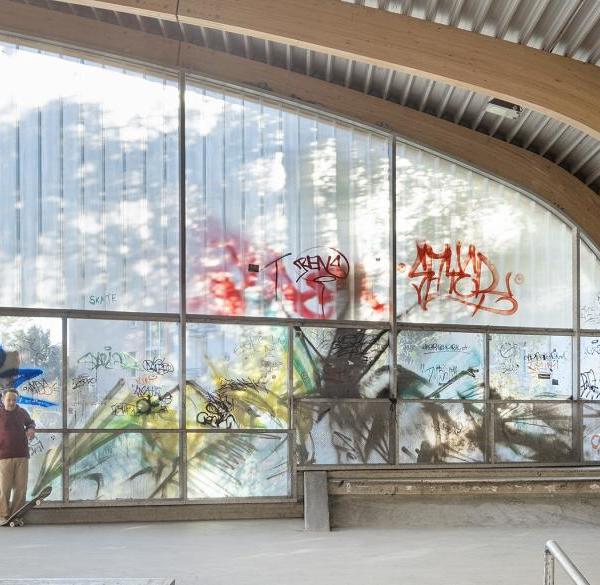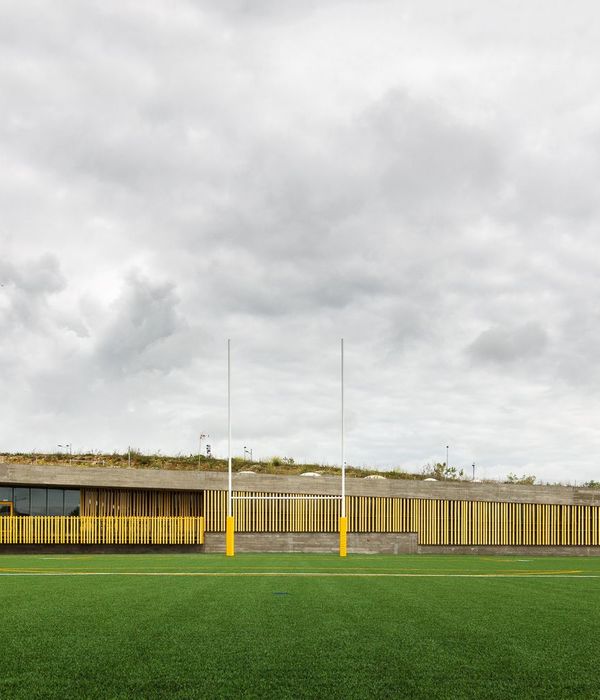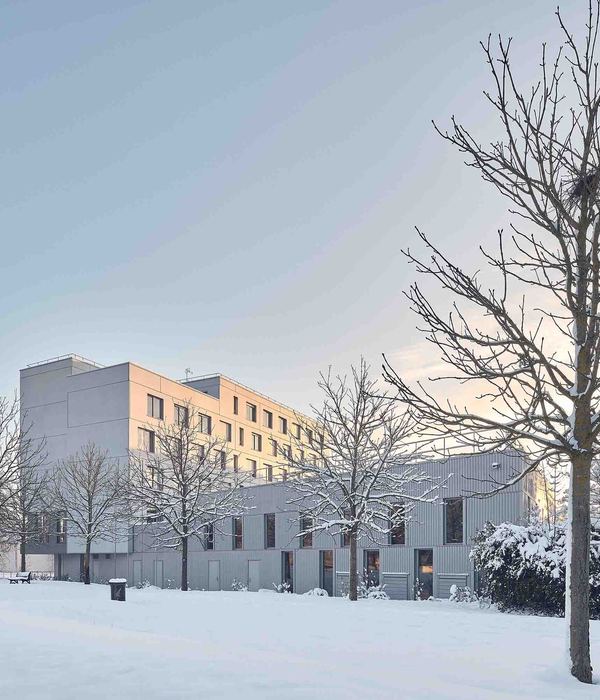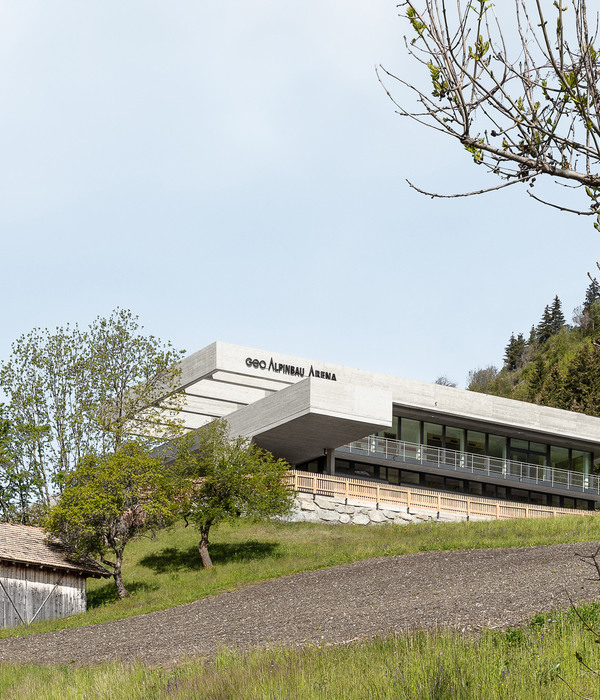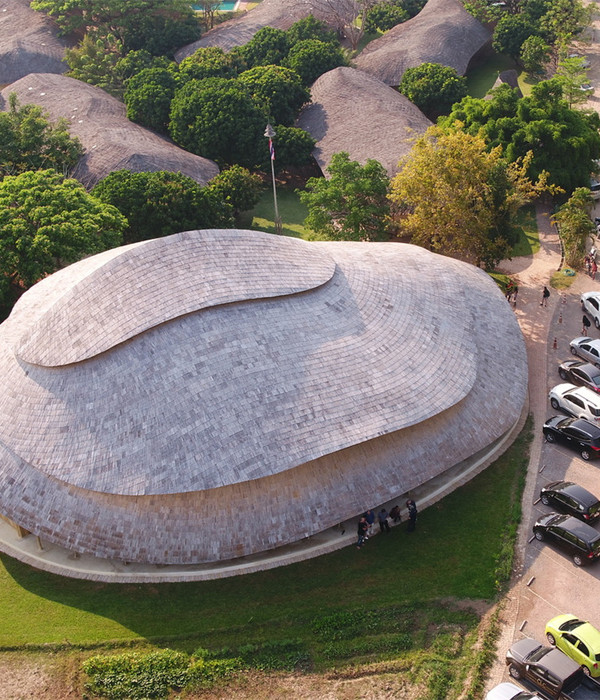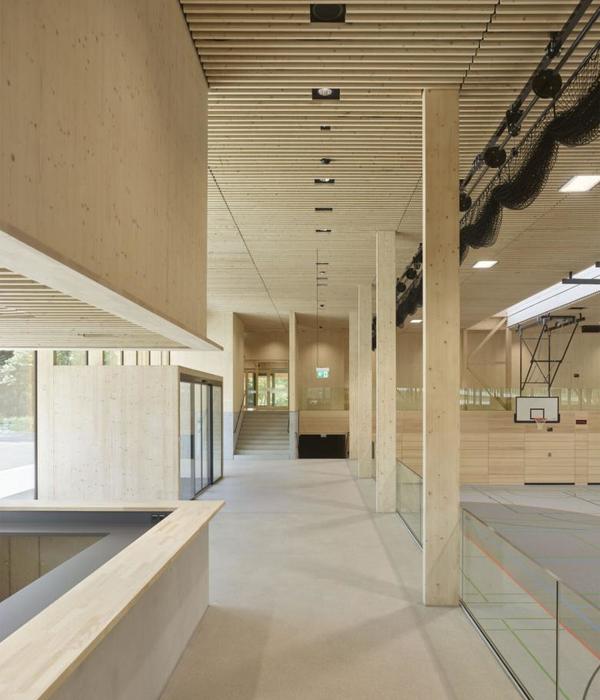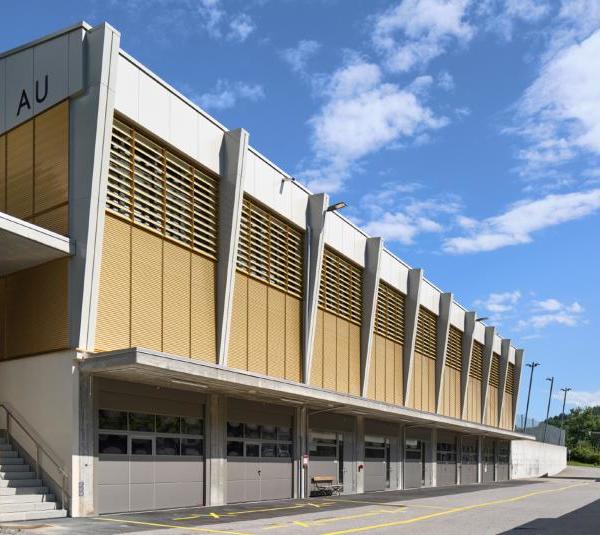The opportunity for the World Writing Museum project, is to achieve a building that can becomes the neuralgic heart of the Songdo Central Park and that can significantly increase the potentials still unexpressed.
Insert an architecture in the center of the Songdo Central Park, is an operation that requires a careful assessment of the impact that the new museum pole will have on the landscape and functional quality of the Park itself. That is why the heart of the project is to propose an architectural element that is formally associated with the green area around it and which is indissolubly bound to it . Both the park and the museum needs to be strictly connect one another.
The building presents itself as a linear element placed over three organic emergencies formed by the union of different variable section of cone trunks. The circular plants of the ground floor ideally marry the curved shapes of the land art of the Park, while the rectangular ones of levels 1 and 2 are refer to the regular geometric shapes of the skyscrapers and the city's plant. The surface of the underlying project area is innervated by various bending radius and concentric circumferences that close themselves around the three organic volumes of the ground floor. The ground design recalls the idea of gravitational waves, which are generated by the presence of the three volumes that appears to emerge from the park and which support, as a giant fingers, the large parallelepiped that contains the exhibition area and the office of the Writing Museum.
In this way, the volume, that hosts the museum functions, floats like a bridge building, under which the park runs, ensuring the distance service and increasing the usability . In fact, it is through the park that is possible to reach the different areas of the museum on the ground floor. The park thus becomes the element of union, or to say even better, the distribution element that connects the functions, well-divided by the concrete shell of the cone trunks. So every single function will have a well-defined path: in this way the visitor who come from the museum will follow a distinct flow, well separated from those that come from the library or from those who come from the auditorium or the conference room; this public path will not cross those reserved to the Museum staff: so the access to areas destined for workers and museum staff will be totally separated from the public ones. This creates a natural connection system between the building and the green area that crosses it.
But let's go with order: the most noticeable volume, by size and location, is the main access to the Museum. It is located to the left of the pedestrian entrance axis: you can reach it by going through the park under the bridge museum building. Once you cross the entrance, you will immediately find a helical ramp that goes down to the underground level (-5 meters) , where you will find the foyer, with ticket offices and the museum shop. From here you can reach the info point or immediately begin the exhibition path that runs through a climbing helix that connects the two main museum floors: the first one at 5 meters over the ground floor, while the second one takes place at 10 meters. The ramp is inserted inside the larger cone trunk that crosses the entire building from floor to sky and then culminates in a large glazed roof that illuminates the entire volume of the museum, both the exhibition spaces than the distribution one. As mentioned before, the ramp gets the dual purpose of linking the three levels of the museum and allowing, at the same time, the display of paintings, sculptures, parchments, books and video installations all along its path. The central body of the Museum consists of the two levels of the bridge building along which the exhibition path is developed: this space is conceived as a series of regular boxes formed by modular partitions, joinable through a series of sliding rails that allows you to create different spaces of shape and size, depending on the needs of the different exposures you want to obtain at different times of the year. 'FLEXIBILITY' is the word.
Once you have reached the second level of the museum, and after you have finished to visit it, the visitor can drop down to the ground floor (level 0,00) through the smaller cone trunk, at the opposite end of the entrance, and leave the museum.
At the park level, to the right of the pedestrian entrance axis, you can access the volumes that host the library and the conference room. The two linked cone trunks are placed one (the library) under the bridge building and the other (the conference room) overlooking the north side . The library is spread over two floors on the ground floor and along a circular barn that houses an annular library; Its cover is set at 6.5 meters from the ground, penetrating the first floor level of the bridge building and becoming a circular space centrally located in relation to the museum: an open-air square that has the dual function of a meeting place and source of natural light. Around this overturned cone, the distribution areas of the two museum levels are develop creating a full height space that with its balconies faces the central square.
Again, on the ground floor (level 0.00), but on the opposite side of the pedestrian entrance of the visitors, there is the access to the underground car park (level - 5.00) for the private facilities of the museum staff and for the loading and unloading operations from heavy vehicles (vans and trucks). From the basement there is access to the technical premises and the warehouse with its mechanical lifting systems that, through the last trunk of cone, reach all levels of exhibition areas, offices and warehouses.
The cafeteria is located in the last circular volume on the south side near the lake. It is always accessible through the park, and through the main entrance of the Museum.
LAND MARK within LAND ART
The bridge building, formed by the two levels of the exhibition area, is basically a huge reticulated beam leaning against the cone trunks of the ground floor. The façades are covered with low emissive crystals that may be obscured or lightened according to the needs. They are also protected by a series of vertical blades made of clay, that have the dual function of protecting facades from direct natural light and cooling the surface.
Moreover, the blades strongly characterize the appearance, making the construction much more material and making it "vibrate" thanks to an irregular score in both dimensions and distances.
The blades are enriched on the facades by a series of interconnected LEDs that light up in the evening and can reproduce any image, phrase, ideogram or sign you want to communicate. The four faces become four huge "video walls": a new landmark for Songdo Central Park.
{{item.text_origin}}


